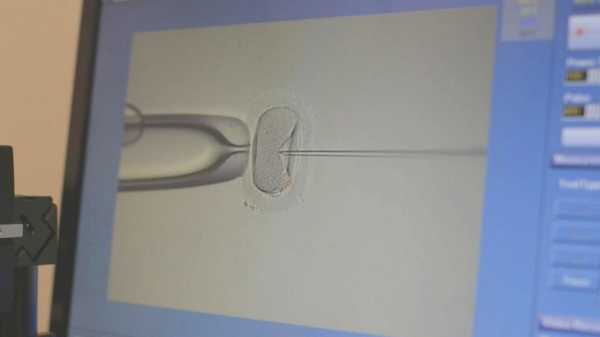

MRSI 2018Louise Joy Brown celebrated her 40th birthday at the Midwest Reproductive Symposium International in Chicago in June.
Born as a result of in-vitro fertilization, or IVF, baby Louise paved the way for what some estimate could be seven million IVF babies born worldwide after her.
The IVF procedure involves creating fertilized embryos from donor eggs and sperm in the lab, then implanting them in a woman’s uterus. “In Vitro” translates literally from Latin to “in glass,” referring to the glass test tubes, now petri dishes, that doctors use when fertilizing the eggs.
“We have a little bit of science, a little bit of magic, a little bit of unknown,” John Belon, a senior endocrinologist at Genesis Fertility Clinic in Brooklyn, New York, told ABC News.
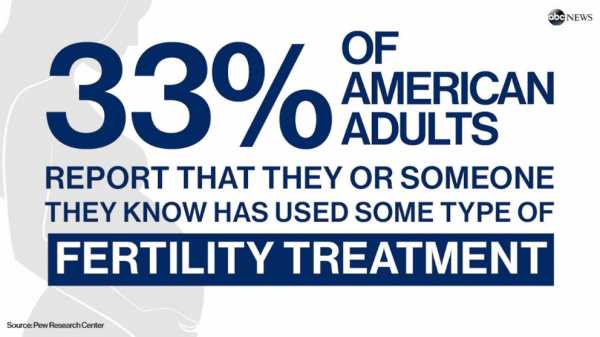
ABC News
“The basic premise in all in-vitro fertilization cycles is that the eggs are removed from a woman’s body, fertilized in vitro or in the petri dish and then the resulting embryos are at some point put back into the womb where the baby grows hopefully uneventfully,” Dr. Richard Grazi, medical director at Genesis Ferity Clinic told ABC News.
IVF is one form of what the Centers for Disease Control and Prevention calls “assisted reproductive technology,” or ART.
Based on CDC reports of fertility-assisted births from the states, the Pew Research Center estimates that more than one million babies have been born in the U.S. using these procedures since 1996.
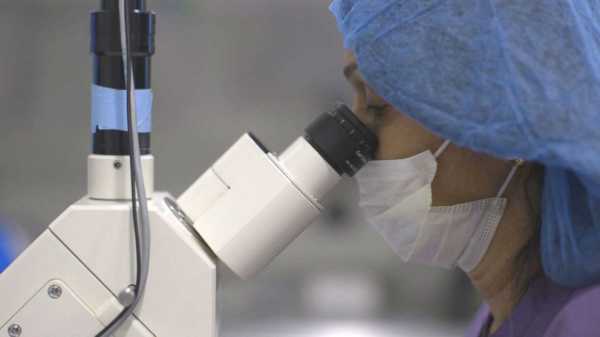
ABC NewsA third of U.S. adults say they have used fertility treatments or know someone who has.
Generally, certain groups of people have been more likely to use fertitility treatments.
Education level is one of the factors that could affect the likelihood, according to the Pew research study. About 43 percent of people with bachelor’s degrees reported having “some exposure” to fertility treatment. That number rose to 56 percent for those who had earned a post-graduate degree.
Race and money factored in, as well. Whites were most likely to have undergone fertility treatment, or to know someone who has, at 37 percent.
Hispanics were next most likely at 26 percent, followed closely by blacks at 22 percent, according to the Pew study. In terms of income, families with incomes of $75,000 or more were more likely to have been exposed to fertility treatment.
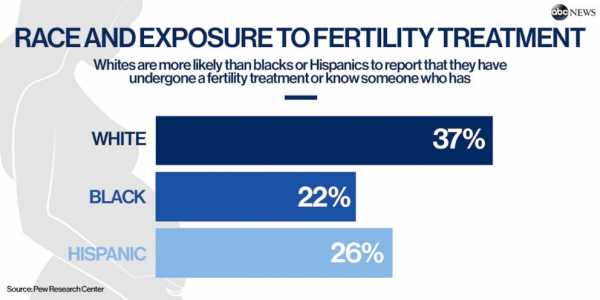
ABC News
Although women were a little more likely than men to have encountered fertility treatments in the Pew study — 36 percent vs. 30 percent — women and men have similar rates of infertility, Grazi said.
“About half of infertility either is attributed to a male factor only or male factor in addition to female factor,” he noted.
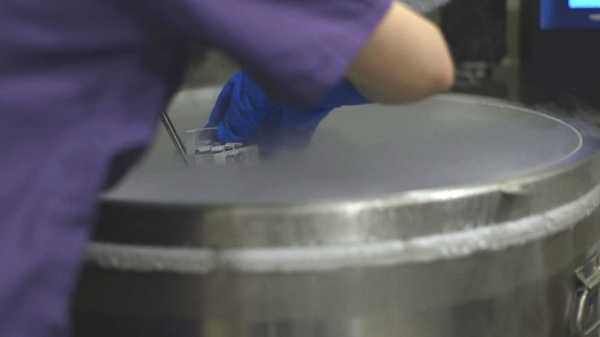
ABC NewsAn embryologist removes frozen embryos from a cryogenic tank during the IVF process.
(MORE: Infertility: ‘Don’t underestimate how hard we are trying’)
(MORE: Foods to eat and skip to increase chances for pregnancy)
(MORE: Mother who struggled with infertility says April Fools’ jokes about pregnancy can hurt)
ART procedures to help women conceive can become very expensive. The average IVF cycle costs around $10,000 including medications, Grazi said.
Some insurance companies cover the cost of fertility treatments, while others do not.
Advocacy groups like Resolve are working to change state laws to require insurance companies to cover infertility treatments, but this is not currently mandated.

ABC NewsDiscarded needles used to inject hormones into a woman undergoing IVF.
About two percent of births in the U.S. result from some form of ART procedure, according to Pew.
Brown said she finds the progress in these treatments, which began with her parents and doctors, is inspiring.
“I think it’s excellent that it gives people hope and they can still have a family,” she said.
Sourse: abcnews.go.com
0.00 (0%) 0 votes


































